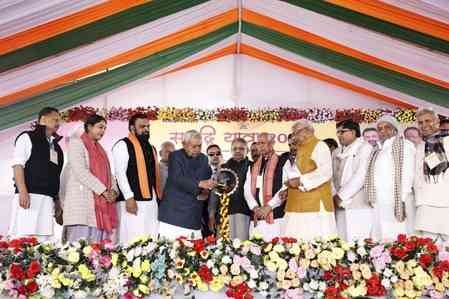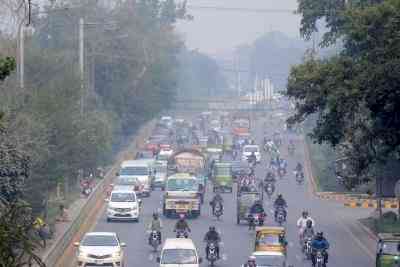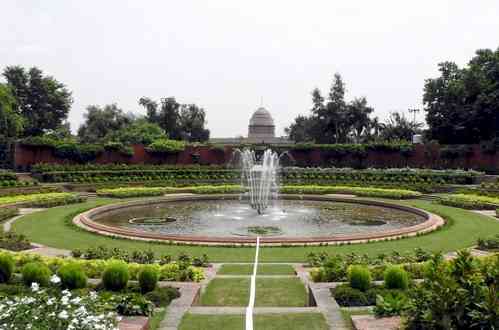Immediate need to focus on converting 300 million on-road vehicles to clean fuels for any tangible air quality impact: IAC
According to the 'World Air Quality Report, 2020', India holds the unsavory distinction of being home to 22 of the world’s 30 most polluted cities

New Delhi: An estimated 300 million vehicles currently run on polluting liquid fuels in India, contributing to its status as home to 22 of the world’s 30 most polluted cities. With mass adoption of Electric Vehicles still a distant future, an absence of a near term strategy to convert existing vehicles to cleaner alternatives is a crucial policy oversight.
Indian Auto LPG Coalition, apex body of Auto LPG stakeholders in India, has said that Government’s indifference towards immediately available clean alternative fuels is proving to be a major health bane for the country.
A recently released 'World Air Quality Report, 2020', by Swiss organisation IQAir features 22 Indian cities among the top 30 most polluted cities in the world, with Delhi ranking as the world’s most polluted capital city yet again. However, with the government putting all its policy focus on long term roll out of Electric Vehicles, clean air remains a distant dream for a large part of the Indian population.
“Electric Vehicles are still in very early stages of adoption and even the most optimistic projections suggest that a mass adoption is not likely to begin at least till another decade. Meanwhile, around 300 million vehicles including two wheelers continue to produce toxic emissions. With a complete dearth of focus on immediate available clean air solutions, millions of Indians are likely to continue breathing toxic air for years. Even as the Government initiates policy measures such as a new Scrappage Policy and Green Tax, it must simultaneously incentivize existing vehicles to convert to clean alternative fuels such as Auto LPG. Our recent studies have demonstrated yet again that harmful tailpipe emissions from Auto LPG are significantly lower than even BS VI compliant petrol,” said Mr Suyash Gupta, Director General, Indian Auto LPG Coalition.
Latest emission tests conducted by IAC have found that tailpipe emissions from Auto LPG are significantly lesser than even BS VI compliant petrol vehicles. Auto LPG emissions were found to be much below petrol and at just a fraction of the BS VI limits, making it a highly viable alternative fuel that if adopted widely has the potential to accelerate India’s clean environment goals.
Auto LPG was found to emit almost 52% lesser carbon monoxides, 47% less total hydrocarbons and 50% less non methane hydrocarbons as compared to Petrol and at an extraordinary 82% lower emissions for CO, 70% lower for THC, 62% lower for NmHC and 81% lower NOx than the BSVI limits.
There remains a large untapped market for vehicle conversions in India with consumers actively looking to cleaner as well as cheaper alternatives to petrol and diesel. In this situation, a positive messaging from the government supported by regulatory easing and fiscal incentives can bring about a largescale clean switch.
Notably, existing petrol/diesel vehicles including two wheelers can easily be converted to Auto LPG or CNG by installing conversion kits. With Auto LPG priced upto 48% lower than petrol, consumers can also achieve significant cost savings on fuel through this transition. Reducing the prohibitive GST rate of 28% on conversion kits and offering certain subsidy support for conversion kits can go a long way in inducing a mass shift to clean transport fuels. Conversion kits that currently cost up to Rs 25,000 can be made significantly more affordable with GST cuts and subsidy support.
Auto LPG is the third most widely used automotive fuel used globally after petrol and diesel. It has almost 50% lesser PM emissions than CNG and Petrol and 80% lower PM emissions than Diesel. Vehicles using Auto LPG as fuel also emit much lower CO2, making Auto LPG one of the most eco-friendly fuels available today. Several governments across the world have adopted aggressive policies to encourage consumers to switch to Auto LPG, thereby making significant environment gains. It is interesting to note that while countries like South Korea consume almost 4 million of Auto LPG annually, Indian consumption is languishing at 10 % of that, being just about 0.4 million tonnes.


 cityairnews
cityairnews 










